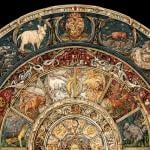Bart Ehrman wrote something recently that conveys something crucial, and does so clearly and succinctly:
It makes sense that people today would think that we should have archaeological evidence of Jesus – after all, he’s the most important figure in the history of Western Civilization! If he existed, surely we’d have some physical record of it, right? The problems are that (a) we too quickly assume that someone who is important *after* his life must have been equally important *during* his life; but that’s absolutely not the case. No one who has looked seriously into the matter thinks Jesus was “the talk of the empire,” of importance to anyone outside of his small circle of acquaintances in rural Palestine. Even more important (b) the reality is that we don’t have archaeological records for virtually *anyone* who lived in Jesus’ time and place.
Who was the most important Jewish figure in Palestine for the entire first century (who wasn’t, say, the actual king)? There’s no doubt. Flavius Josephus. Highly placed aristocrat, military leader, political figure, eventually made a court historian by the Roman emperor himself, and our principal source of information for the Jewish people and history at the time. And how much archaeological evidence do we have of his existence? None.
So too, who is (by far) the best known Jewish cultural figure *outside* of Palestine in the first century? Again, not much competition: Philo of Alexandria, brilliant philosopher, massively prolific author, political activist, known even at the highest levels of government in Rome itself. How much archaeological evidence do we have of his existence? Again, none. The lack of evidence does not mean a person at the time didn’t exist. It means that she or he, like 99.99% of the rest of the world at the time, made no impact on the archaeological record. Evidence of existence has to be established, then, on other grounds.
This is just one part of an interview he gave and it is worth reading the whole thing. The History Channel website also offered an overview of the question of Jesus’ existence, discussing archaeology and texts, in direct connection with Ehrman. See too Ehrman’s response to a question from a reader of his blog about Jewish sources that provide historical information about Jesus.
Of related interest, the BBC had a very interesting article about the involvement of the Franciscans in archaeology, historically (pun intended) and in the present day. And Steven Fine shared his contribution on the burial of Jesus and archaeology that is part of the Jewish Annotated New Testament. The Live Science overview of “Biblical Archaeology” may also be of interest.
And on the topic of Jesus mythicism, Tim O’Neill has posted his latest installment in his series on Jesus mythicism. Here’s an excerpt:
[I]n almost 20 years of asking those making this “Amalgam Jesus” claim to detail their analysis I have almost always been given … nothing. This stance seems, in most cases, to not be a real position based on analysis of evidence at all, but little more than a comforting hunch. It does not require the effort and the baroque contortions of full scale Jesus Mythicism, but it also keeps any kind of close historical basis for anything claimed by Christianity at a safe distance. So it feels about right, even if its proponents cannot actually back it up with any kind of detail. Like most forms of Mythicism, semi-Mythicism and “Jesus agnosticism”, it is based more on emotion than reason.
Click through to read the rest. See too Candida Moss on the similar portraits of Jesus and Apollonius of Tyana. Tim also made an appearance on the Non Sequitur Show. It is definitely one of the oddities of the entire mythicist phenomenon that people find this “amalgam Jesus” idea plausible. Ancient people, and indeed people in any time period or specific cultural context, resemble one another more than they resemble the onlooker viewing them from outside that time/place/context. It pretty much never makes sense to take two people with different names and activities and to simply identify them with one another, merely because they are similar in some respects.
Larry Hurtado’s recent comments may or may not have been about mythicists, but they sure are applicable. See also his list of recommended reference books about early Christianity.
Do also take a look at Joel Edmund Anderson’s survey of conspiracy thinking in Richard Carrier’s mythicism and Ken Ham’s young-earth creationism. He writes, “the similarities between the two groups can be seen in their tendencies, mindset, and approach to both scholarship and biblical interpretation.” But he also says some things that are much blunter.
Also on the topic of Jesus and history, Elizabeth Palmer interviewed Amy-Jill Levine. Ben Witherington has a series about Amy-Jill Levine’s book Entering the Passion of Jesus. It includes a review of the book, and then an interview with Levine across multiple posts. Here are Part One, Part Two, Part Three, Part Four, Part Five, Part Six, Part Seven, Part Eight, Part Nine, and Part Ten so far. Meanwhile, Mike Bird clues us in that Helen Bond’s latest book about Jesus mentions Doctor Who, among other things! And David Capes is blogging about Jesus and Capernaum.
This post grew and grew and so I scheduled a second post…and then a third one. And so there will be more posts about mythicism coming your way soon, in case you’re wondering – including one inspired by a recent interaction on another Patheos blog!













